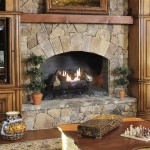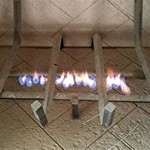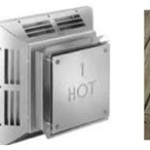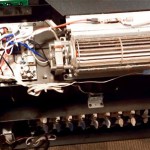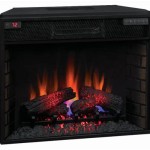Understanding Fireplace Inserts: A Focus on Wood Burning Models
Fireplace inserts offer a practical and efficient solution for revitalizing existing fireplaces. They function as closed combustion systems designed to fit inside an existing firebox, enhancing heating efficiency and reducing emissions compared to traditional open fireplaces. Among the various fuel types available, wood-burning fireplace inserts remain a popular choice, providing a classic aesthetic and a readily available fuel source for many homeowners.
A wood-burning fireplace insert consists of a firebox surrounded by a steel or cast iron shell. This insert is then placed within the opening of an existing fireplace. A flue liner is typically installed to connect the insert to the existing chimney, ensuring proper venting of exhaust gases. The insert is designed to draw combustion air from outside, minimizing drafts and improving heating performance within the home. Compared to an open-hearth fireplace, which loses a significant amount of heat up the chimney, a wood-burning insert is much more efficient, radiating heat into the room and providing a more controlled burn.
Key Point 1: Efficiency and Heating Performance
The primary advantage of a wood-burning fireplace insert lies in its increased heating efficiency. Open fireplaces are notoriously inefficient, often losing as much as 90% of the heat generated up the chimney. This is due to the large volume of air required for combustion, which creates a strong updraft that pulls warm air out of the room. A wood-burning insert, on the other hand, is designed to burn wood more completely and efficiently. The closed combustion chamber controls the airflow, allowing for a longer, cleaner burn with less wasted heat. This translates into a significant improvement in heating output and reduced fuel consumption.
Modern wood-burning inserts boast impressive efficiency ratings, often exceeding 70%. This means that over 70% of the energy contained in the wood is converted into usable heat for the home. The improved efficiency also reduces the amount of wood needed to achieve the desired heating effect, saving homeowners money on fuel costs over time. Some models also incorporate features such as catalytic converters and secondary combustion systems, further enhancing efficiency and reducing emissions.
Heat output is typically measured in British Thermal Units (BTUs). When selecting an insert, it's crucial to consider the size of the space to be heated and choose a model with an appropriate BTU rating. An undersized insert may struggle to adequately heat the room, while an oversized insert could lead to overheating and wasted fuel. Consulting with a qualified installer can help determine the optimal BTU rating for a specific home and heating needs.
Key Point 2: Environmental Considerations and Emissions
Traditional open fireplaces can contribute significantly to air pollution due to incomplete combustion and the release of particulate matter and other harmful emissions. Wood-burning fireplace inserts offer a cleaner burning alternative, meeting stringent emission standards set by organizations such as the Environmental Protection Agency (EPA). EPA-certified inserts are designed to reduce smoke and particulate emissions, helping to improve air quality both indoors and outdoors.
Several technologies contribute to the cleaner burning performance of wood-burning inserts. Catalytic combustors, for example, use a catalyst to lower the combustion temperature, allowing for more complete burning of gases and particles. Non-catalytic models utilize advanced firebox designs with specific air intake patterns and baffle systems to achieve similar results. These designs promote secondary combustion, where unburned gases are re-ignited, further reducing emissions and increasing efficiency.
Proper wood selection and burning practices are also crucial for minimizing emissions. Using seasoned (dried) wood is essential, as it burns more cleanly and completely than green or wet wood. Seasoned wood has a lower moisture content, which reduces the amount of smoke produced during combustion. Furthermore, avoiding burning treated wood, painted wood, or trash is important to prevent the release of harmful chemicals into the air. Regular chimney cleaning and maintenance are also essential for ensuring proper draft and preventing the buildup of creosote, a flammable substance that can pose a fire hazard.
Key Point 3: Installation and Maintenance
Proper installation is paramount for the safe and efficient operation of a wood-burning fireplace insert. It's highly recommended to have the insert installed by a qualified professional who is familiar with local building codes and safety regulations. Installation typically involves preparing the existing fireplace opening, installing a flue liner to connect the insert to the chimney, and ensuring proper ventilation and airflow.
The flue liner is a critical component of the installation, as it provides a dedicated pathway for exhaust gases to escape the home. The liner must be properly sized and installed to prevent creosote buildup and ensure adequate draft. Stainless steel liners are commonly used due to their durability and resistance to corrosion. The liner should be insulated to maintain optimal flue temperatures and prevent condensation, which can contribute to creosote formation.
Regular maintenance is essential for keeping a wood-burning fireplace insert in good working order. This includes regular chimney sweeping to remove creosote buildup, inspections of the firebox and flue liner for signs of damage or wear, and cleaning of the glass door to maintain visibility. The frequency of chimney sweeping will depend on the amount of wood burned and the type of wood used, but it's generally recommended to have the chimney inspected and cleaned at least once a year. Following the manufacturer's recommendations for maintenance and cleaning will help to ensure the safe and efficient operation of the insert for years to come.

Wood Burning Fireplace Inserts 1 Stove Insert Dealer

Wood Burning Fireplace Inserts Insert Installation

Napoleon Epi3 Wood Fireplace Insert Inserts By

Ventis Hei240 Wood Burning Insert

Why A Wood Burning Fireplace Insert Bethesda Md Service

Lopi Premium Wood Fireplace Inserts Custom Hearth Fireplaces And Stoves

T25i Timberwolf Wood Fireplace Insert Hearth Stove Patio

Wood Inserts We Love Fire

Osburn 3500 Wood Burning Fireplace Insert 31 Ob03510 Hvacdirect Com

Ventis Hei240 Wood Fireplace Insert Mace Energy Supply
Related Posts

